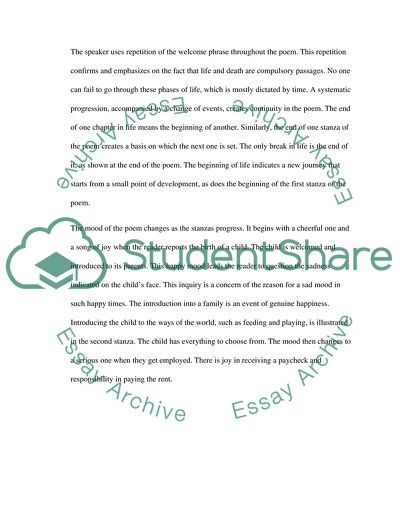Cite this document
(“Poem Analysis: Song Of Welcome Essay Example | Topics and Well Written Essays - 1000 words”, n.d.)
Retrieved from https://studentshare.org/literature/1686525-poem-analysis-song-of-welcome
Retrieved from https://studentshare.org/literature/1686525-poem-analysis-song-of-welcome
(Poem Analysis: Song Of Welcome Essay Example | Topics and Well Written Essays - 1000 Words)
https://studentshare.org/literature/1686525-poem-analysis-song-of-welcome.
https://studentshare.org/literature/1686525-poem-analysis-song-of-welcome.
“Poem Analysis: Song Of Welcome Essay Example | Topics and Well Written Essays - 1000 Words”, n.d. https://studentshare.org/literature/1686525-poem-analysis-song-of-welcome.


